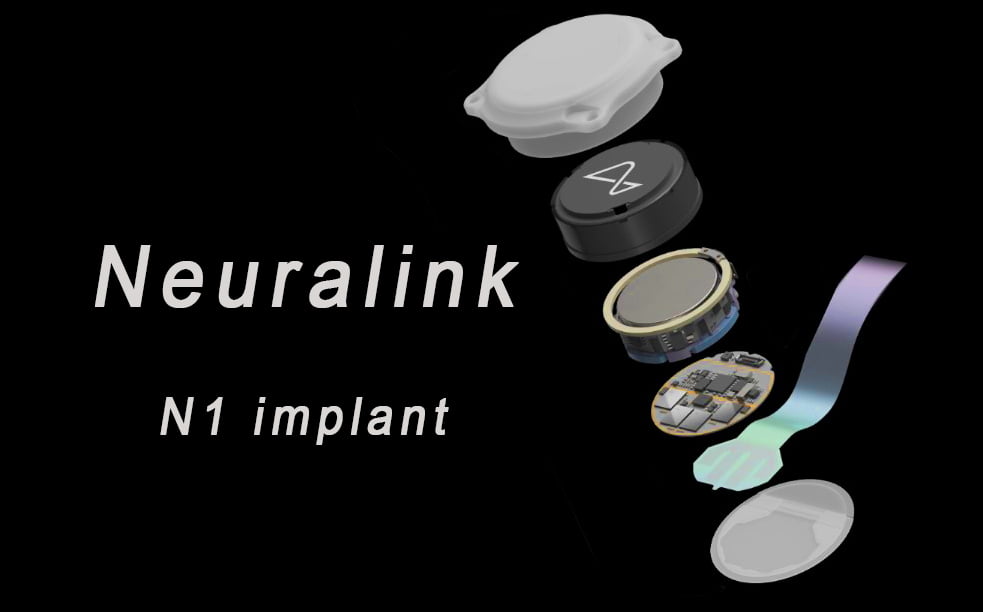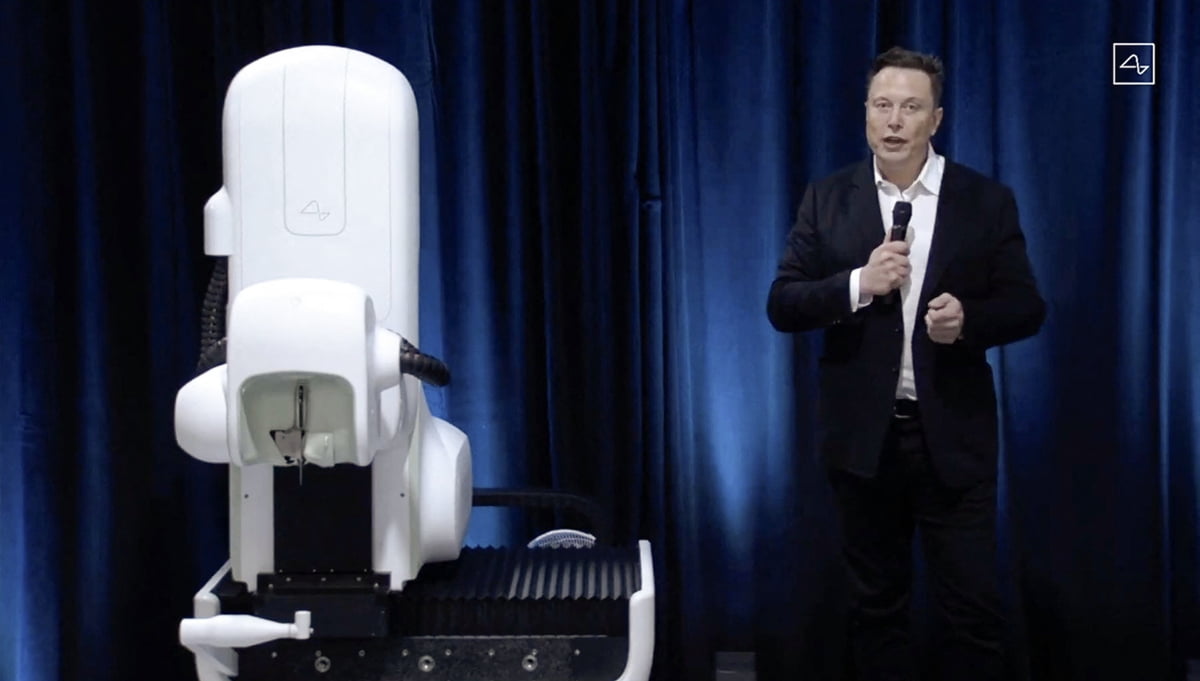Table of Contents
Table of Contents
Introduction
Neuralink, the brainchild of tech entrepreneur Elon Musk, has been making enormous waves in the world of neurotechnology. Among its ambitious projects, the Telepathy Project stands out as a revolutionary endeavor aimed at redefining human communication. This article highlights the intricacies of Neuralink’s telepathy research, exploring its potential uses and the ethical concerns that come with it.
Understanding Telepathy in Science
Telepathy, the ability to transmit thoughts and feelings directly from one mind to another, has long been a subject of fascination and speculation. Basically, it is the idea that could establish a direct communication channel between brains, bypassing the need for spoken or written language. While it has often been portrayed in science fiction, Neuralink is turning this concept into a tangible reality.
Vision Behind Neuralink & how its Telepathy Works
Neuralink’s ultimate goal is to merge the human brain with artificial intelligence, creating a symbiotic relationship that enhances cognitive abilities. The Telepathy Project is a significant step towards this vision, promising seamless communication through neural interfaces. This is achieved through a Brain-Computer Interface (BCI) – These are electronic devices that are bio-compatibly seal enclosed and can record and transmit neural activity. Neuralink is calling this their N1 implant.
By decoding the complex patterns of neural firing and signals, the BCI can translate thoughts into digital signals and potentially transmit them to another brain equipped with a similar interface. These interfaces, implanted in the brain, decode neural signals via ultra thin electrodes which are physically linked with the brains neurons. The brains thoughts are translated by them into digital information, and consecutively passed on to the other devices.

What types are Brain-Computer Interface (BCI)
-
Non-invasive BCIs: These are the most common type. They resemble headsets or caps with electrodes positioned strategically on the scalp. These electrodes can be wet (using a conductive gel) or dry, depending on the technology. Non-invasive BCIs are generally comfortable to wear but may have limitations in capturing deeper brain signals.
-
Invasive BCIs: These are surgically implanted directly into the brain or on the surface of the cortex. They offer higher resolution brain signal recording but are more complex, expensive, and carry surgical risks. Invasive BCIs are typically used in research settings or for individuals with severe disabilities.
Why Neuralink is using an invasive BCI
Neuralink would be using the invasive type of BCI in their telepathy project due to the following advantages:
- Higher Resolution: Invasive BCIs, are implanted directly on the surface of the brain. This proximity allows them to capture brain signals with much higher resolution compared to non-invasive BCIs. Successfully deciphering complex thought patterns for telepathic communication requires this level of detail.
- Specificity: Telepathy involves accurately identifying specific thoughts and intentions. Invasive BCIs can be positioned over targeted brain regions associated with language processing, sensory perception, or motor function. This focused approach can improve the accuracy of distinguishing between different thought patterns.
- Signal Strength: Non-invasive BCIs struggle with capturing faint or deep brain signals. Telepathic communication likely involves a complex exchange of information, potentially requiring access to deeper brain activity that non-invasive BCIs might not be able to reliably detect.
What are the Challenges with Invasive BCI’s
While offering advantages for telepathy, invasive BCIs also come with significant challenges:
- Surgical Risks: Brain surgery carries inherent risks of infection, bleeding, and damage to brain tissue.
- Ethical Considerations: The invasive nature of these devices raises ethical concerns about patient autonomy and potential misuse.
- Long-Term Effects: The long-term effects of implanting devices in the brain are still under investigation.
- Social Acceptance: The public may be less receptive to widespread use of invasive BCIs compared to non-invasive alternatives.
 PIC Courtesy: NEURALINK
PIC Courtesy: NEURALINK
How do the Brain Computer Interfaces BCI’s work
BCIs rely on the feature that brain activity generates tiny electrical currents. Hence, BCI devices work in three main stages:
- Signal Acquisition: Electrodes in the BCI detect these electrical signals from the brain, focusing on specific patterns associated with thoughts or actions.
- Signal Processing: The raw electrical signals are then amplified and filtered by the BCI to remove noise and isolate the relevant information.
- Brain-Machine Interface: Specialized software interprets the processed signals and translates them into commands for an external device like a computer cursor, robotic limb, or communication software. The complexity of this translation depends on the type of BCI and the desired action.
For interaction with the Brain and External Devices, there are two main communication pathways in a BCI system:
- Brain to Device: As described above, the BCI captures brain signals, interprets them, and transmits the information to an external device. These data will be wirelessly transmitted. This allows users to control the device with their thoughts, say for eg., a computer screen could be controlled with the BCI, as the human looks and thinks where to click, or which texts to type.
- Device to Brain: In some cases, BCIs can also provide feedback to the user. For example, a BCI used for prosthetic limbs might send signals back to the brain to simulate touch sensations.
 PIC Courtesy: NEURALINK
PIC Courtesy: NEURALINK
How would be the BCI devices fixed in Human Brain
Neuralink’s approach to fixing their BCI devices inside the brain is a highly anticipated and closely guarded secret. However, based on information gleaned from patents, research papers, and public statements by Elon Musk, here’s a possible scenario for how these devices might be implanted:
Minimally Invasive Surgical Technique:
- Neuralink emphasizes a minimally invasive surgical approach, likely utilizing a Robotic surgical system. This reduces the size of the incision needed and potentially minimizes risks associated with traditional brain surgery.
- The surgeon would likely use a specialized needle or injector to insert the BCI threads containing the ultra-thin electrodes.
- Neuralink describes their electrodes as threads and mentions a size of 4-6 micrometers (µm) in width. For comparison, a human hair is roughly 70-100 micrometers in diameter, so these electrodes are incredibly thin and flexible.
- Number of electrodes: Neuralink’s current N1 implant boasts 1024 electrodes spread across 64 threads.
Benefits of Neuralink’s Telepathy Project
The implications of a successful telepathy project are vast. Here are some potential applications:
- Revolutionizing communication: Imagine a world where thoughts are exchanged directly, eliminating misunderstandings and language barriers. This could be particularly beneficial for people with speech disabilities or those in critical situations where verbal communication is impossible.
- Enhanced human-computer interaction: Telepathy could bridge the gap between humans and machines. Imagine controlling devices or software with just your thoughts, offering a more intuitive and seamless user experience.
- Medical applications: Neuralink’s technology could be used to create brain-machine interfaces that assist paralyzed individuals or those suffering from neurological disorders. By directly stimulating the brain, these interfaces could help restore lost motor functions or alleviate symptoms.
- Scientific advancements: Telepathy could offer a new window into the human mind, allowing scientists to study brain activity with unprecedented detail. This could lead to breakthroughs in our understanding of consciousness, memory, and other cognitive processes.
- Augmented Learning: Knowledge and skills can be shared directly through thought, revolutionizing learning and education.
- Empathy and Emotional Control: Deepening emotional bonds. It can opens up the possibility for individuals to share not just thoughts and ideas, but also emotions and feelings.
Ethical Concerns
Despite the promising applications, Neuralink’s telepathy project raises several ethical concerns:
- Privacy violations: The ability to directly access another person’s thoughts raises serious privacy concerns. Imagine a world where our innermost thoughts and conversations are vulnerable to hacking or unauthorized access.
- Security risks: Neuralink’s technology could be susceptible to hacking, potentially allowing malicious people to manipulate thoughts or steal sensitive information.
- Mind control: The possibility of directly influencing or controlling another person’s thoughts is a nightmarish scenario with dire consequences.
- Inequality and discrimination: Access to such technology could exacerbate social inequalities, creating a divide between those who can afford it and those who cannot.
- Autonomy and Identity: Questions might rise about the impact on individual autonomy, philosophical and psychological implications on the individual’s sense of self.

Conclusion
Neuralink’s telepathy project represents a significant leap forward in brain-computer interface technology. While the human trials have already begun and yielded some striking results, its potential benefits are undeniable. But the ethical considerations cannot be ignored.
As we move forward to a Bionic Tech world, a collaborative effort between scientists, ethicists, policymakers, and the public is necessary to ensure the responsible development and deployment of this groundbreaking technology.
***READ THIS UNIQUE ARTICLE ON THE BENEFITS OF MEDITATION***
FAQs
Q1: How does Neuralink ensure the safety of brain implants?
- Ans: Neuralink employs advanced materials and surgical techniques to minimize risks and ensure the safety of its implants.
Q2: Can anyone participate in Neuralink’s trials for the Telepathy Project?
- Ans: Neuralink’s trials are conducted with careful selection criteria via their Patient Registry program, often involving individuals with specific medical conditions.
Q3: Will Neuralink’s Telepathy Project be available for everyday consumers?
- Ans: Neuralink aims to make its technology accessible to a wide range of individuals, with plans for consumer applications in the future.
Q4: What are the potential downsides of telepathic communication?
- Ans: Some concerns include information overload, loss of privacy, and ethical dilemmas surrounding the control of thoughts.
Q5: How does Neuralink address ethical concerns related to brain manipulation?
- Ans: Neuralink is committed to transparency and ethical oversight, working closely with experts to navigate complex ethical challenges.







